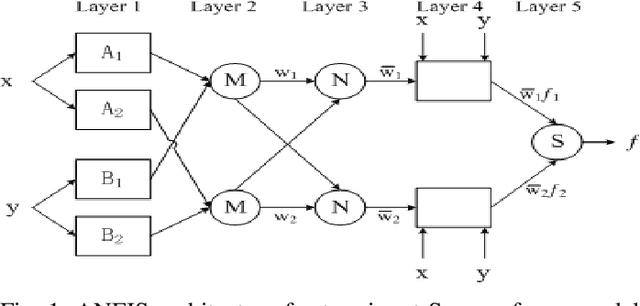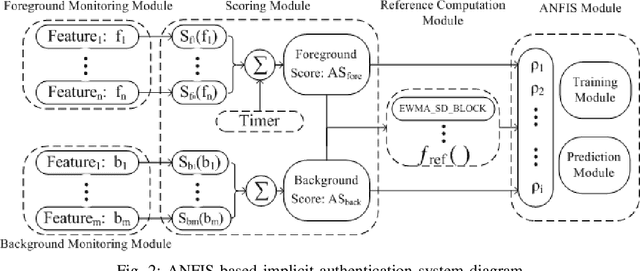BooJoong Kang
Continuous Implicit Authentication for Mobile Devices based on Adaptive Neuro-Fuzzy Inference System
May 18, 2017



Abstract:As mobile devices have become indispensable in modern life, mobile security is becoming much more important. Traditional password or PIN-like point-of-entry security measures score low on usability and are vulnerable to brute force and other types of attacks. In order to improve mobile security, an adaptive neuro-fuzzy inference system(ANFIS)-based implicit authentication system is proposed in this paper to provide authentication in a continuous and transparent manner.To illustrate the applicability and capability of ANFIS in our implicit authentication system, experiments were conducted on behavioural data collected for up to 12 weeks from different Android users. The ability of the ANFIS-based system to detect an adversary is also tested with scenarios involving an attacker with varying levels of knowledge. The results demonstrate that ANFIS is a feasible and efficient approach for implicit authentication with an average of 95% user recognition rate. Moreover, the use of ANFIS-based system for implicit authentication significantly reduces manual tuning and configuration tasks due to its selflearning capability.
N-gram Opcode Analysis for Android Malware Detection
Dec 05, 2016



Abstract:Android malware has been on the rise in recent years due to the increasing popularity of Android and the proliferation of third party application markets. Emerging Android malware families are increasingly adopting sophisticated detection avoidance techniques and this calls for more effective approaches for Android malware detection. Hence, in this paper we present and evaluate an n-gram opcode features based approach that utilizes machine learning to identify and categorize Android malware. This approach enables automated feature discovery without relying on prior expert or domain knowledge for pre-determined features. Furthermore, by using a data segmentation technique for feature selection, our analysis is able to scale up to 10-gram opcodes. Our experiments on a dataset of 2520 samples showed an f-measure of 98% using the n-gram opcode based approach. We also provide empirical findings that illustrate factors that have probable impact on the overall n-gram opcodes performance trends.
PageRank in Malware Categorization
Aug 02, 2016



Abstract:In this paper, we propose a malware categorization method that models malware behavior in terms of instructions using PageRank. PageRank computes ranks of web pages based on structural information and can also compute ranks of instructions that represent the structural information of the instructions in malware analysis methods. Our malware categorization method uses the computed ranks as features in machine learning algorithms. In the evaluation, we compare the effectiveness of different PageRank algorithms and also investigate bagging and boosting algorithms to improve the categorization accuracy.
N-opcode Analysis for Android Malware Classification and Categorization
Jul 27, 2016



Abstract:Malware detection is a growing problem particularly on the Android mobile platform due to its increasing popularity and accessibility to numerous third party app markets. This has also been made worse by the increasingly sophisticated detection avoidance techniques employed by emerging malware families. This calls for more effective techniques for detection and classification of Android malware. Hence, in this paper we present an n-opcode analysis based approach that utilizes machine learning to classify and categorize Android malware. This approach enables automated feature discovery that eliminates the need for applying expert or domain knowledge to define the needed features. Our experiments on 2520 samples that were performed using up to 10-gram opcode features showed that an f-measure of 98% is achievable using this approach.
 Add to Chrome
Add to Chrome Add to Firefox
Add to Firefox Add to Edge
Add to Edge